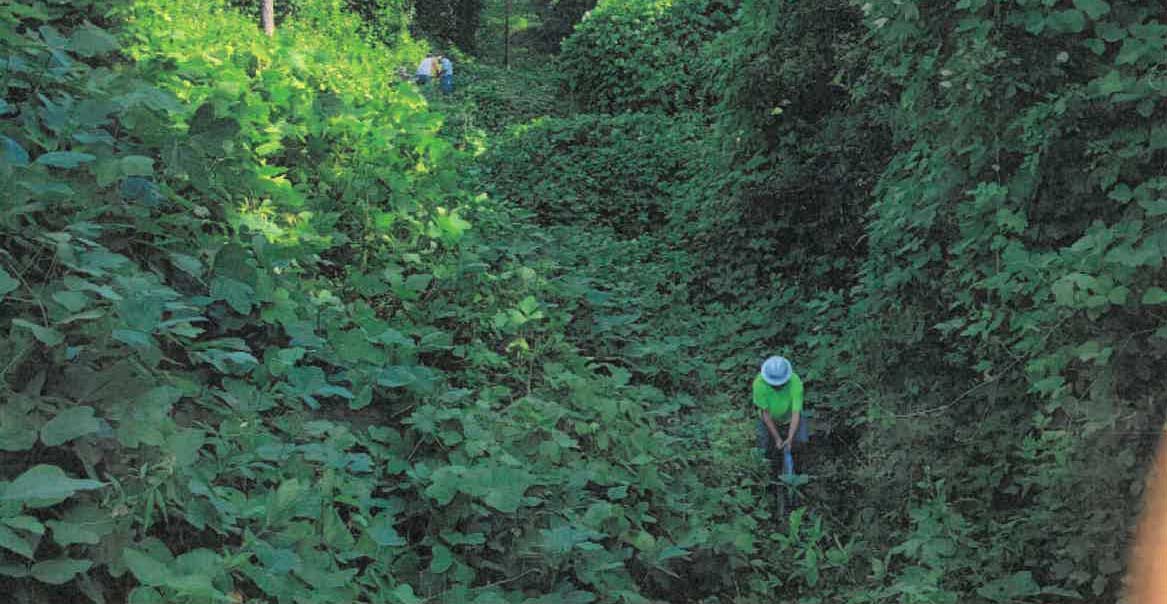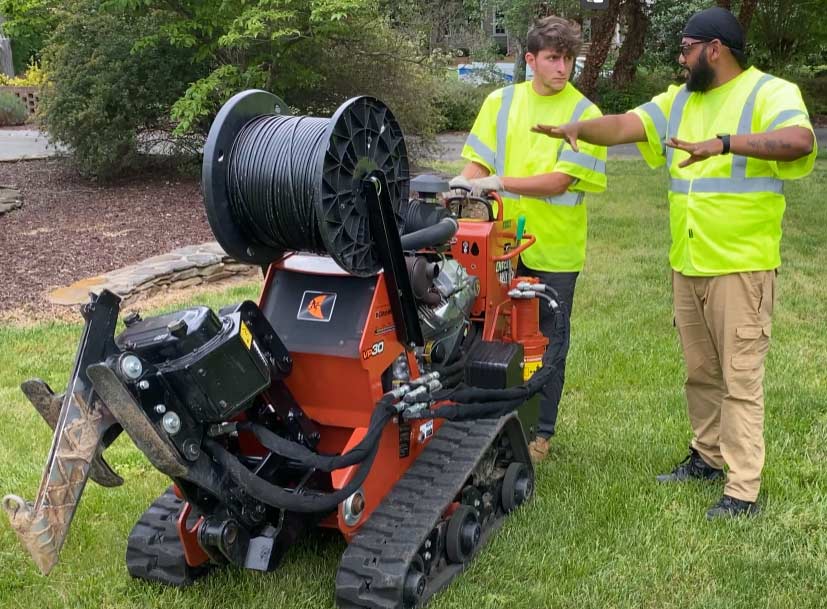From no Internet to Blazing, High-Speed Internet … out in the ‘sticks!’
Mike, a recent National OnDemand customer, had a major problem. He was a successful digital marketer, but he lived in the rural south with no access to high-speed internet when he was away from work. It’s hard to work outside the office with no connection. The crazy part is that Mike managed this technical disadvantage for a decade.
The average person typically depends on being connected without much hassle. It’s hard to imagine being in Mike’s position, working a full-time job tied to the internet without a reliable connection to his online world. For Mike, the struggle was real.
Mike would often stay at work long after work hours just to stay connected. His job depended on it. Eventually, he reached the point where he felt he needed to spend $25 monthly to be able to use his cell phone as a “hotspot” and maintain a basic Internet connection from his house.
On top of running out of data, the speeds were abysmal. However, living far from urban civilization, it was Mike’s best option.
Each year, rumors of “real” Internet making it out to rural North Carolina were still just that. The talk amounted to nothing, with no visible progress or construction backing up the rumors. Internet service providers would put yard signs up in the area boasting it could offer residents “real” high-speed Internet, but it wasn’t the high-speed internet he really needed. When Mike’s situation couldn’t get much worse, a global pandemic hit.

High-Speed Internet In Rural Areas
While house-bound, Mike went from regarding high-speed internet as a luxury to struggling to do his job without it. As COVID-19 worsened, Mike became one of the thousands of people that began to exclusively work from home. According to the Federal Communications Commission, in late 2021 around 18 million Americans didn’t have access to broadband internet. Coincidentally, most people without internet lived in rural communities like Mike.
Some days, Mike drove to work and sat in the office parking lot to access the company’s Wi-Fi. Otherwise, he had no way to finish his projects for work.
As Zoom calls became the standard for meetings, Mike’s situation only got worse. He inevitably found ways to finesse connection without losing signal or falling off entirely.
As time passed, Mike wondered, “If I can get electricity out here, then why can’t I get Internet?”
“Although it’s possible, it can be extremely expensive to build out fiber projects into rural communities,” Mike was told. Up to this point, there wasn’t much of an incentive for internet service providers to start such a hefty project where homes are sometimes a mile apart. For internet service providers, the return on investment just wasn’t there. Additionally, it would be wrong to assume that everyone in rural communities wants high speed internet. Everyone has a different lifestyle, thus requiring distinct levels of internet access and capabilities.
The Pew Internet & American Life Project found that rural residents “buy-in” or demand service at a far lower rate than those from urban areas and larger cities. A research group called Connected Nation discovered that roughly 19 percent of people in rural areas can’t subscribe to broadband due to a lack of availability. Price, desire, and availability are the three key factors needed for rural residents.
In late 2021, there was a buzz in the community where Mike lives that high-speed Internet was coming. A provider had been in the area and got enough data together to decide that enough residents wanted broadband Internet where they lived. By late 2021, Mike’s community buzzed with anticipation that high speed internet was coming. By early 2022, the dream of finally having high speed internet seemed to finally be coming true. As proof, crews ran lines on roads adjacent to Mike’s house.
After months of waiting, internet service providers finally visited Mike in July of 2022. The providers informed Mike that National OnDemand would oversee the build and would run fiber optic cable that would allow him to have high-speed internet. Not just any high speed service, but fiber optic service capable of transferring data at speeds faster than many of those in urban areas with coaxial service installed years ago. Mike was beyond excited.
After a short conversation by phone, National OnDemand was scheduled to bury fiber underground to his home, and Mike found himself changing from desperation to exhilaration.
On the scheduled date of burial, the team from National OnDemand showed up promptly, explained what they were going to do and answered all of Mike’s questions.
The National OnDemand team laid fiber optic cable from nearby network poles to Mike’s house. Mike was able to tell the team where he wanted the line to run and how to avoid any potential obstacles. Mike took a phone call during the process and was surprised to find the burial was complete in only a few short minutes.

Now that the cable burial was done, Mike need only wait for the installer to come out the following Thursday to make the final connection. Mike was so close; he tracked the days and hours until the installation was finally complete.
Alas, the day finally came, and upon completion, the installation team gave Mike a quick tutorial on his new hardware and made sure he was satisfied with their work. There were so few abrasions in his yard, Mike found it impossible to detect their trucks and equipment had been there at all.
And just like that, Mike had high-speed internet. He felt like he had a brand-new car.
After the installation team departed, Mike eagerly downloaded the streaming apps to all his devices. Just like that, he was off to the races. Mike willingly fell into the rabbit hole of streaming services, utilizing his new Amazon Echo tools to perform silly commands sheerly to enjoy the novelty of saying “Alexa!”
Mike was so excited that weekend that he watched all four seasons of “Yellowstone.” After going without internet for years, Mike spent countless hours that first weekend consuming all kinds of content.
Thanks to National OnDemand, Mike no longer worries about bringing work projects home. He doesn’t fear jumping on Zoom calls. It’s no longer an issue with high-speed, fiber optic internet. He now easily surfs the web to find anything he needs without using a silly phone as a hotspot to stay connected. When National OnDemand showed up to run fiber optic cable in Mike’s rural community, it removed all those potential headaches he suffered previously.

The preceding narrative is based on a true story. This is one of the hundreds of stories of how high speed internet is dramatically changing the lives of rural Americans. From farmers, to teachers, and even digital marketers living just outside the borders of urban communities, broadband internet access is now considered a necessity. National OnDemand is proud to serve urban and rural citizens alike and stands ready to help internet service providers extend service to them as the country embraces the benefits of a high speed digital infrastructure.
